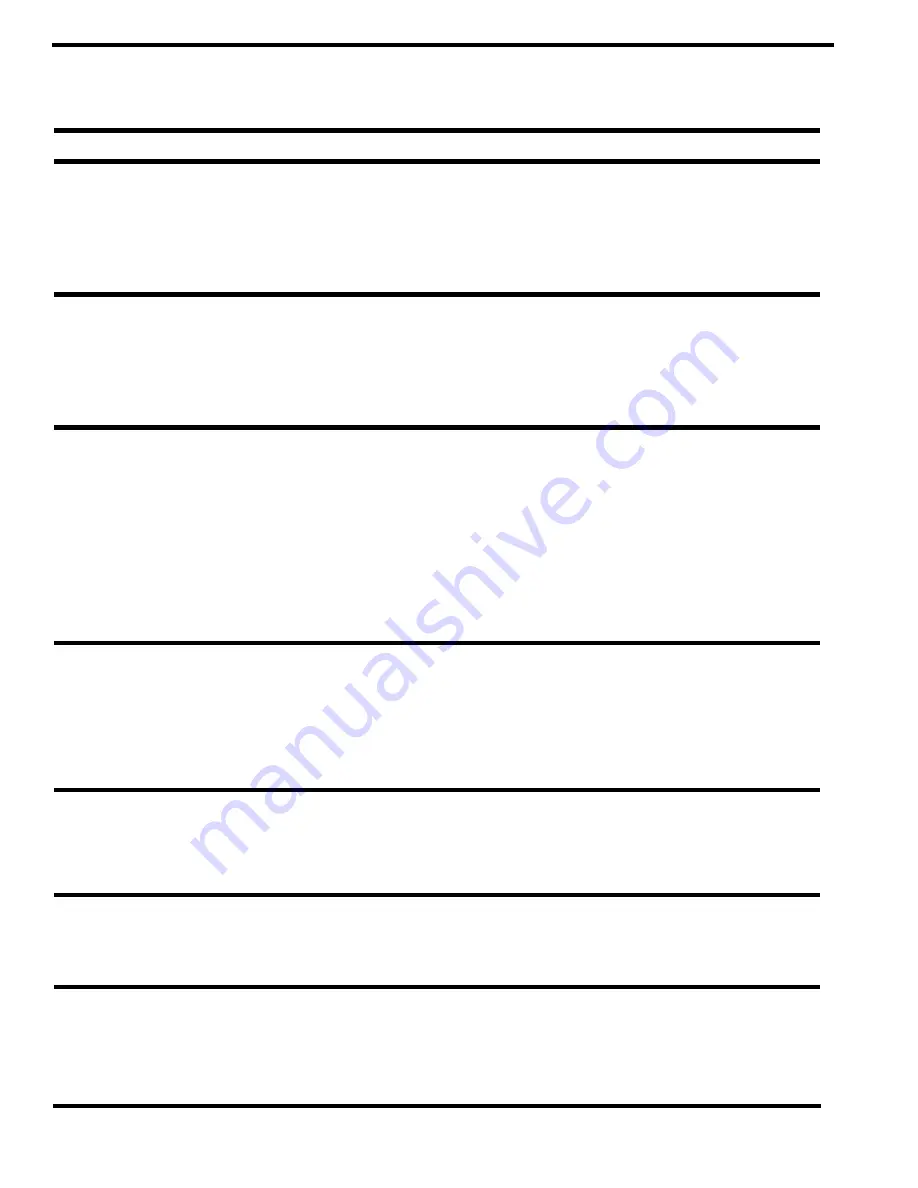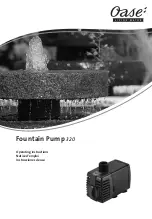
105-A00 Page 10/12
TROUBLESHOOTING
NOTICE:
MAINTENANCE SHALL BE PERFORMED BY QUALIFIED TECHNICIANS ONLY, FOLLOWING THE APPROPRIATE
PROCEDURES AND WARNINGS AS PRESENTED IN THIS MANUAL.
SYMPTOM PROBABLE
CAUSE
Pump Not Priming
1. Pump not wetted.
2. Worn
vanes.
3. Internal control valve closed.
4. Strainer
clogged.
5. Inlet line or valves clogged or too restrictive.
6. Broken drive train (truck mounted pumps).
7. Pump
vapor-locked.
8. Pump speed too low for priming.
9. Relief valve partially open, worn or not seating properly.
Reduced Capacity
1.
Pump speed too low.
2.
Internal control valve not fully open.
3.
Excessive restriction in inlet line (undersized piping, too many elbows & fittings, clogged strainer, etc.).
4.
Damaged or worn parts (vanes, discs, liner or rotor).
5.
Excessive restriction in discharge line causing partial flow through the relief valve.
6.
Relief Valve worn, set too low, or not seating properly.
7.
External Bypass Valve set too low.
8.
Vanes installed incorrectly (see "Vane Replacement").
9.
Liner installed backwards
Noise
1. Excessive pressure drop on the pump due to:
a.
Undersized or restricted fittings in the inlet line.
b.
Pump speed too fast.
c.
Pump too far from fluid source.
2. Running the pump for extended periods with a closed discharge line.
3. Pump not securely mounted.
4. Misalignment of pump, reducer or motor - base mounted pumps.
5. Bearings worn or damaged.
6. Vibration from improperly anchored piping.
7. Bent shaft, or drive coupling misaligned.
8. Excessively worn rotor.
9. Malfunctioning valve in the system.
10. Relief valve setting too low.
11. Liner installed backwards.
12. Damaged vanes (see following category).
Damaged Vanes
1. Foreign objects entering the pump.
2. Running the pump dry for extended periods of time.
3. Cavitation.
4. Excessive
heat.
5. Worn or bent push rods, or worn push rod holes.
6. Hydraulic hammer - pressure spikes.
7. Vanes installed incorrectly (see"Vane Replacement").
8. Viscosity too high for the vanes and/or the pump speed.
9. Settled or solidified material in the pump at startup.
10. Incompatibility with the liquids pumped.
Broken Shaft
1. Foreign objects entering the pump.
2. Relief valve not opening.
3. Hydraulic hammer - pressure spikes.
4. Pump/driver, driveline/drive shaft misalignment.
5. Viscosity too high for the vanes and/or the pump speed.
6. Settled or solidified material in the pump at startup.
7. Excessively worn vanes or vane slots.
Mechanical Seal Leakage
1. O-rings not compatible with the liquids pumped.
2. O-rings nicked, cut or twisted.
3. Shaft at seal area damaged, worn or dirty.
4. Ball bearings overgreased.
5. Excessive
cavitation.
6. Mechanical seal faces cracked, scratched, pitted or dirty.
Overload on Motor
1. Motor Horsepower not sufficient for application.
2. Improper wiring and/or low votage to motor.
3. Misalignment
4. Excessive pressure or speed.
5. Bearing locknuts adjusted improperly.
6. Faulty or worn bearings.
7. Rotor rubbing against head or cylinder.
8. Dirty mechanical seal faces.
Summary of Contents for XLW1 1/2
Page 11: ...105 A00 Page 11 12 NOTES...






























